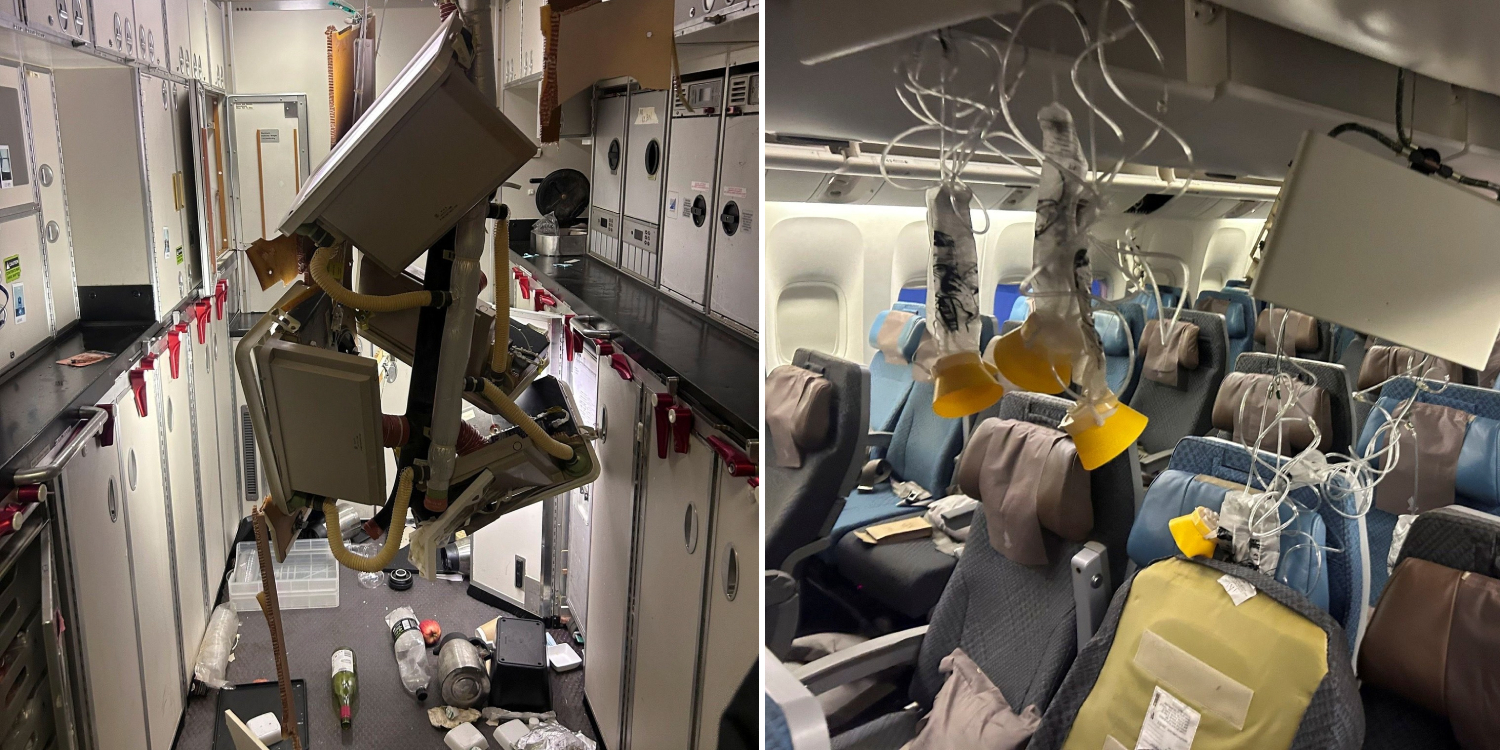MOT releases preliminary findings of SQ321 turbulence event investigation
The Ministry of Transport (MOT) has released preliminary findings by its Transport Safety Investigation Bureau (TSIB) regarding Singapore Airlines (SIA) SQ321 flight incident on 21 May.
SQ321 had made an emergency landing in Bangkok after experiencing severe turbulence, resulting in one passenger death and more than 50 injuries.
MOT said today (29 May) that investigators have retrieved the data stored in the black boxes — otherwise known as the flight data recorder and cockpit voice recorder.
TSIB investigators, together with United States representatives from the National Transportation Safety Board (NTSB), Federal Aviation Administration (FAA), and Boeing, then compiled a chronology of events based on preliminary data analysis.
SQ321 turbulence event preliminary findings reveal sharp drop in altitude
Prior to the turbulence, flight SQ321 had been cruising at normal altitudes after departure from London.
The event occurred at 7.49am UTC (3.49pm Singapore time) when the aircraft was passing over the south of Myanmar at 37,000 ft (11,300m).
It was “likely flying over an area of developing convective activity”, MOT said. Convective activity can refer to sudden sharp changes in the air related to possible showers or thunderstorms.
The aircraft’s G-force fluctuated between positive 0.44G and positive 1.57G for around 19 seconds. The vertical accelerations would result in slight vibration.
Concurrently, an uncommanded altitude increase to 37,362 feet was recorded, prompting the autopilot to pitch the aircraft downwards to return to 37,000 feet.
The pilots observed an uncommanded airspeed increase as well, leading the pilots to extend the speed brakes.
Eleven seconds after the initial vibration, the recording showed a pilot calling out that the ‘fasten seat belt sign’ had been switched on.
MOT said the uncommanded increases in aircraft altitude and airspeed were most likely due to the aircraft being acted upon by an updraft, or the upward movement of air.
“During this period, autopilot was engaged,” it added.
Changes in G caused altitude drop of 178 feet
19 seconds after the initial vibrations, the aircraft experienced a rapid change in G as recorded vertical acceleration decreased from positive 1.35G to negative 1.5G within 0.6s.
This likely caused those who were not belted up to become airborne.
Within four seconds, the vertical acceleration changed again, from negative 1.5G to positive 1.5G.
It likely resulted in airborne occupants falling back down.
The rapid changes in G over the 4.6 sec duration resulted in an altitude drop of 178 ft, from 37,362 ft to 37,184 ft.
MOT said the sequence of events likely caused the injuries to the crew and passengers.
During this sequence, the pilots appeared to initiate control inputs to stabilise the aircraft, while disengaging the autopilot, according to recorded data.
The pilots manually controlled the aircraft for 21 seconds before re-engaging the autopilot at 07.50am UTC, just 44 seconds after the initial vibrations.
After that, vertical acceleration fluctuated more gradually over the next 24 seconds, ranging from positive 0.9G to positive 1.1G.
The aircraft stabilised after, returning to 37,000 ft, 18 seconds following the pilots re-engaging the autopilot.
Diversion after injuries discovered
MOT said a decision was made to divert to Suvarnabhumi Airport after the pilots were informed by the cabin crew that there were injured passengers in the cabin.
On the way to Bangkok, the pilots requested for medical services to meet the aircraft on arrival, it added.
At 8.06am UTC, the pilots initiated a normal, controlled descent from 37,000 ft and the aircraft reached 31,000 ft at 8.10am UTC.
“The data showed that the aircraft did not encounter further severe turbulence during this diversion”, said MOT.
The flight touched down at Suvarnabhumi Airport at 8.45am UTC (4.45pm Singapore time).
SIA acknowledges report
Shortly after MOT released the preliminary findings, SIA posted a statement noting its acknowledgement of the report on social media.
“SIA is fully cooperating with the relevant authorities in the ongoing investigations into this incident,” it said.
“The safety and well-being of our passengers and staff are our top priorities. We are committed to supporting our passengers and crew members who were on board SQ321 on that day, as well as their families and loved ones,” SIA added. “This includes covering their medical and hospital expenses, as well as any additional assistance they may need.”
SIA added that it deeply appreciates the invaluable assistance provided by the governments of Singapore and Thailand, as well as its many partners and the medical teams in both countries and around the world.
“We are also humbled by and grateful for the encouragement from our passengers and members of the public.”
Have news you must share? Get in touch with us via email at news@mustsharenews.com.
Featured image adapted from Reuters via The Straits Times on Facebook.

Drop us your email so you won't miss the latest news.










